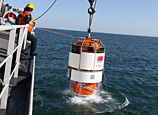
Guangzhou and Shenzhen, which ranked first and second last year, gave up their leading positions to East China's Shanghai and Hangzhou, reflecting the fact that Guangdong province has been hit hard by the country's deteriorating foreign trade situation.
Wuxi, in East China's Jiangsu province, took fifth position as the city improved its traffic system and capacity for innovation, Forbes said in its report.
But coastal provincial cities are seeing their rankings fall as part of an overall trend due to surging operational costs and the slow speed of growth in developed areas, together with a larger exposure to global turmoil.
On the list termed "cities with the highest operational costs", eight out of the top 10 most expensive cities are from coastal provinces, led by Beijing, Shanghai and Tianjin.
In comparison, cities in Central China are climbing up the rankings as a result of adequate labor resources, lower operational costs and improving transport systems.
Zhou Jiangong, editor-in-chief of Forbes' Chinese edition, said this year's table was a reflection of China's economic transformation and industrial transfer.
"The central regions are where people, resources, labor and talents gather, so they are a logistical hub," he said, adding that cities in central regions may overtake first-tier cities as the fastest-growing regions.
















 Snow hits capital of China, flights delayed
Snow hits capital of China, flights delayed


![]()
